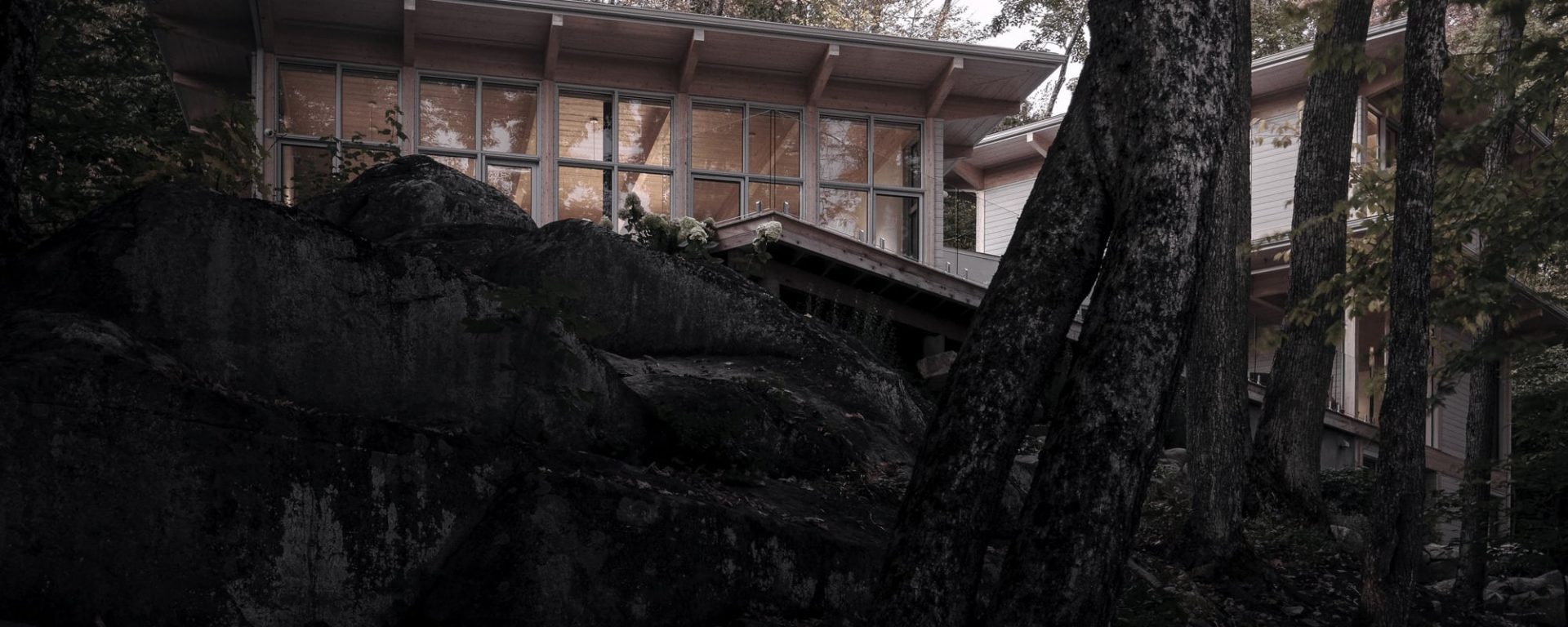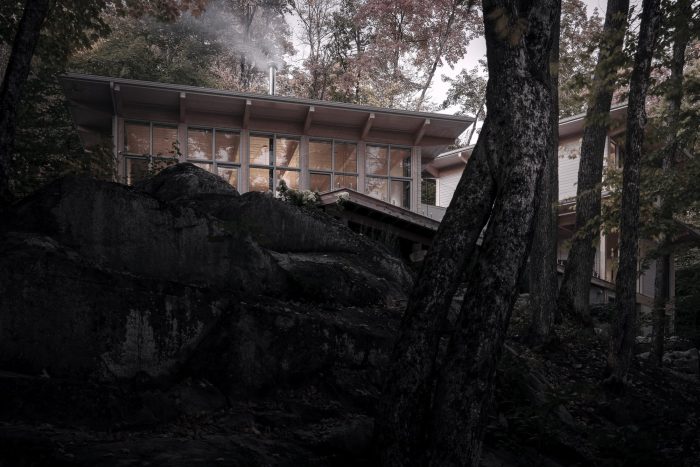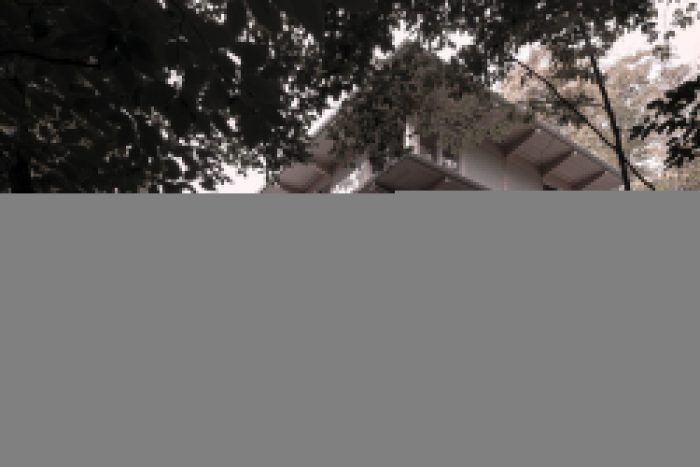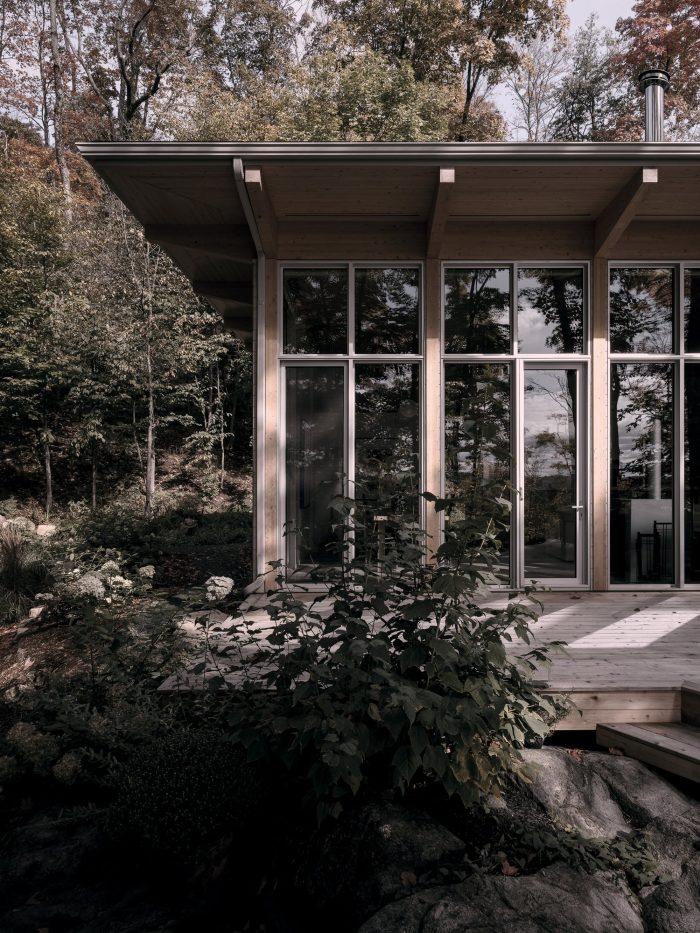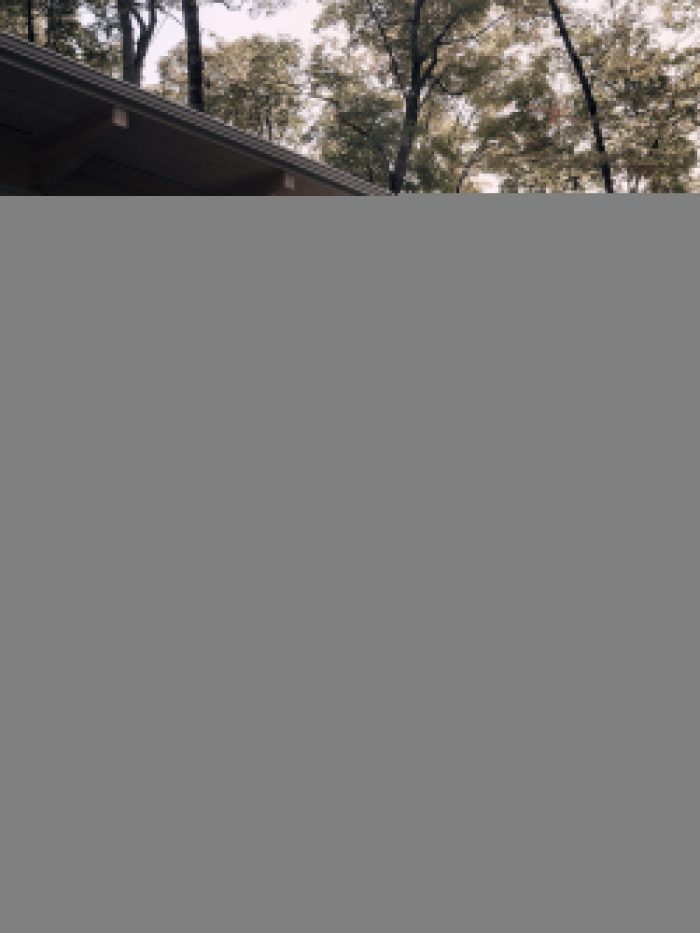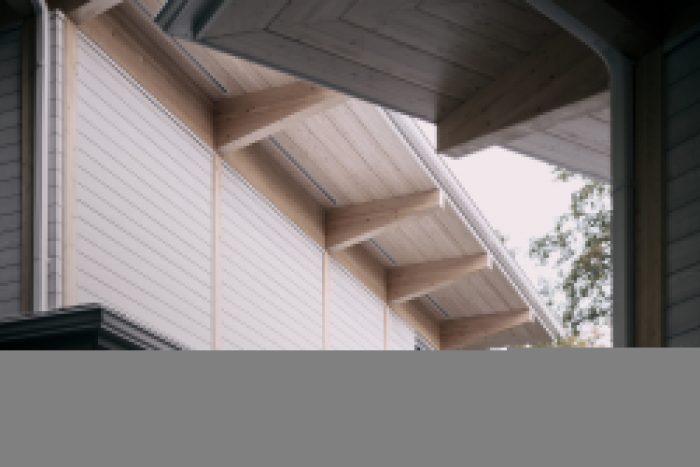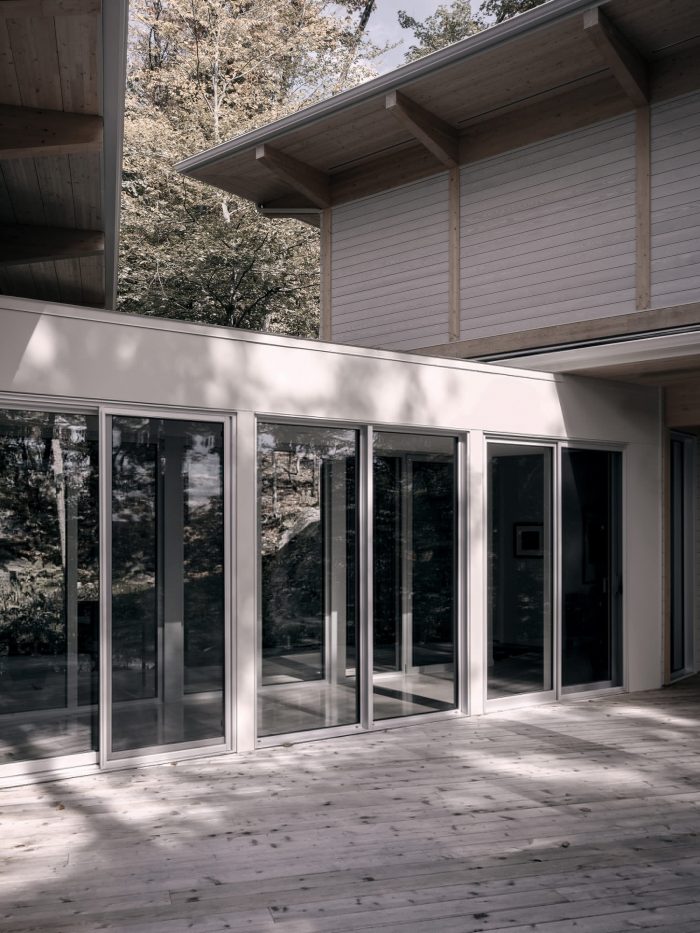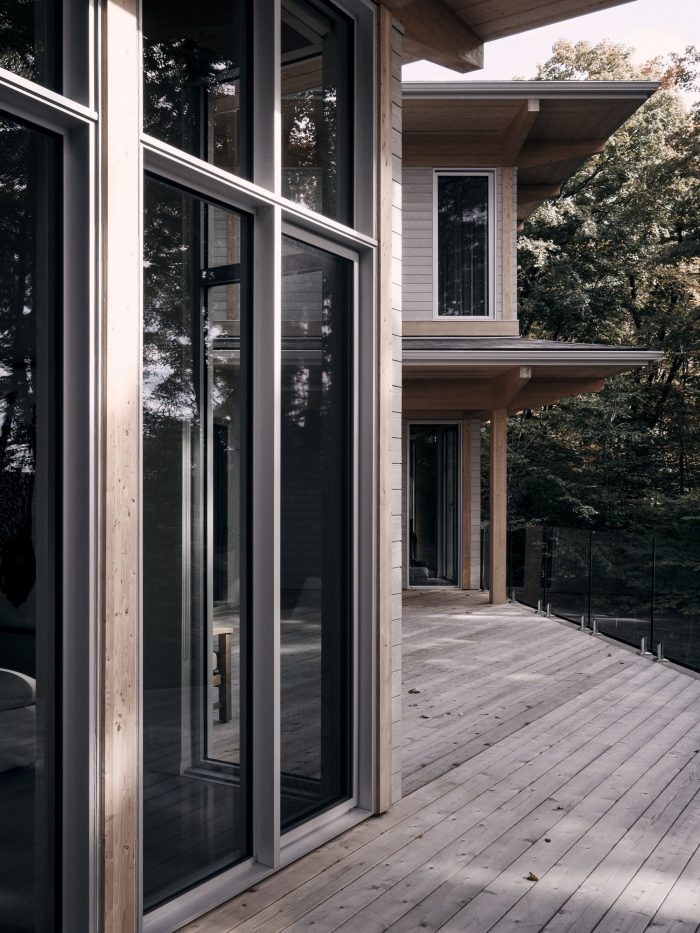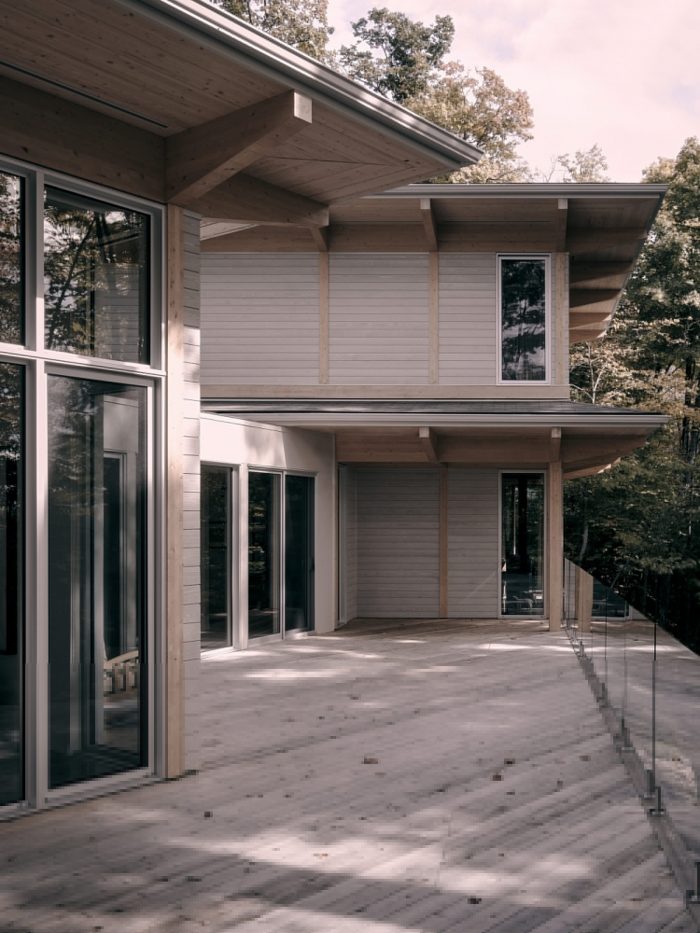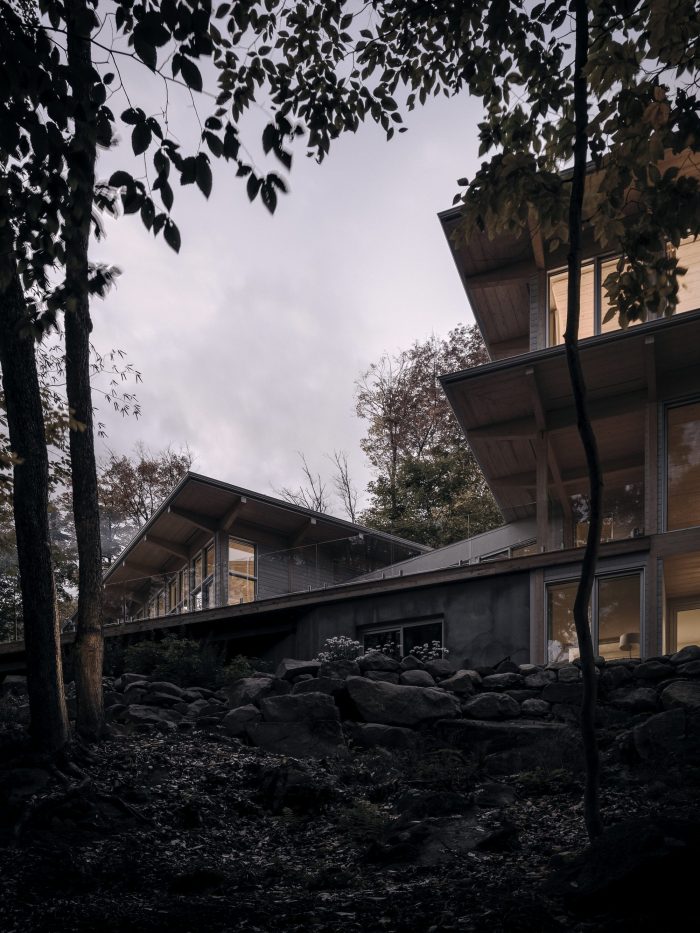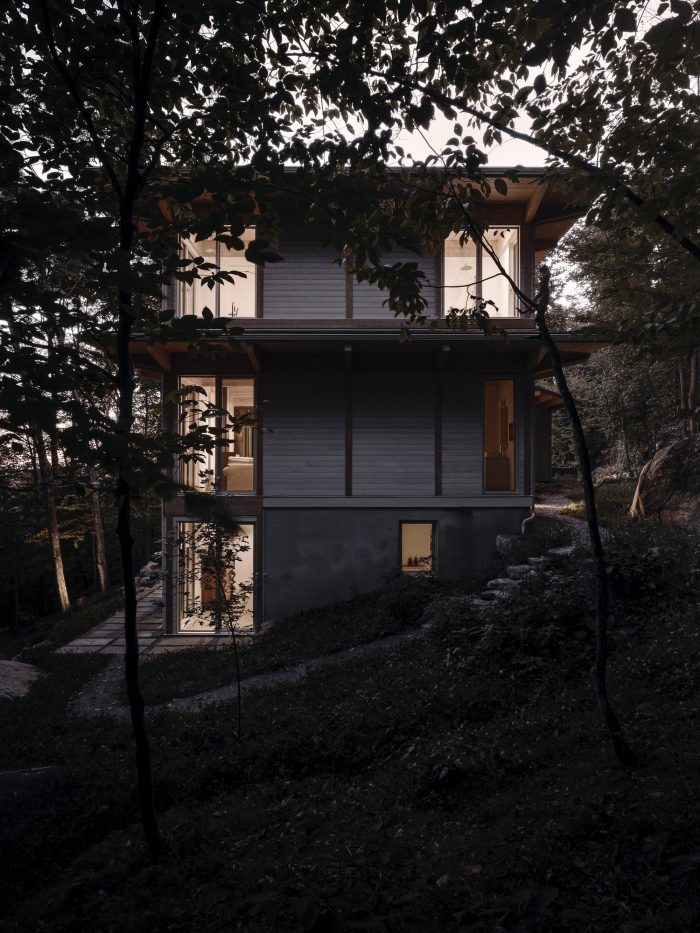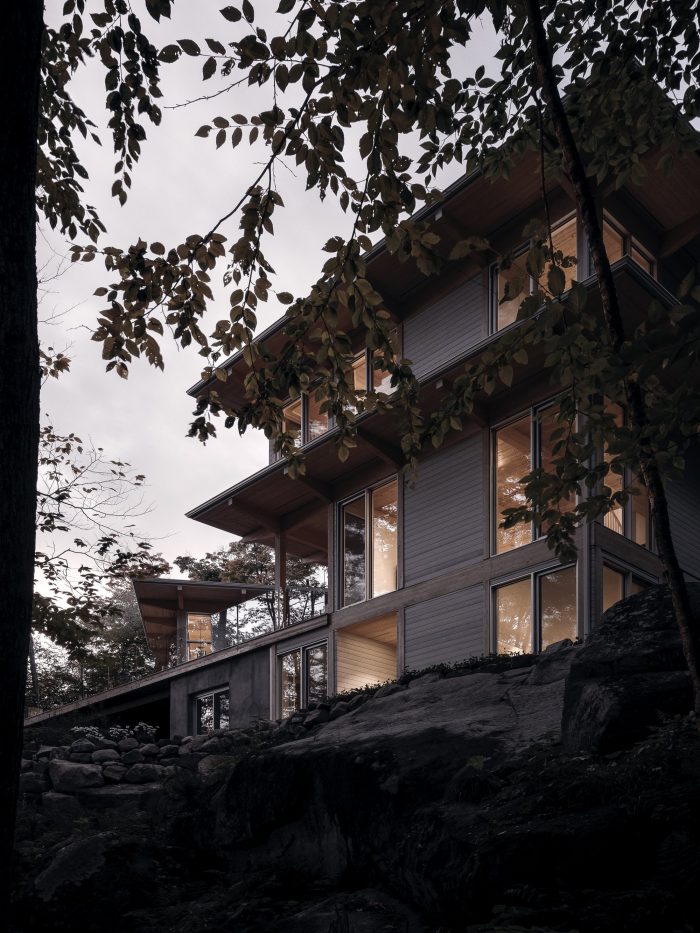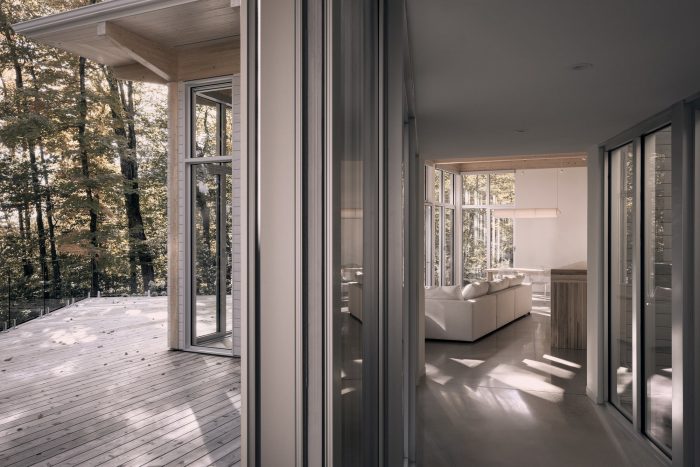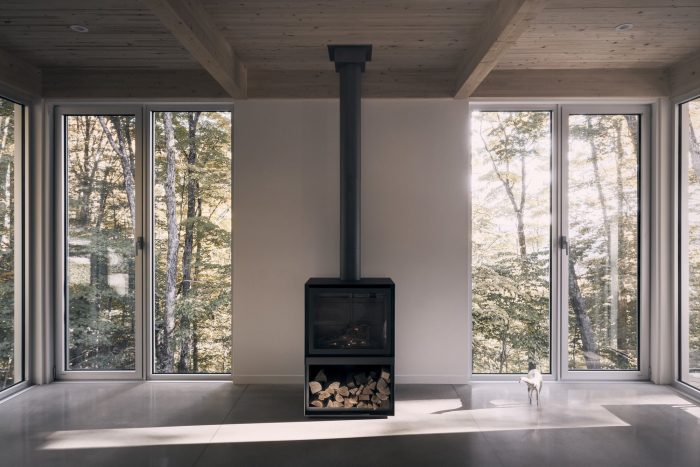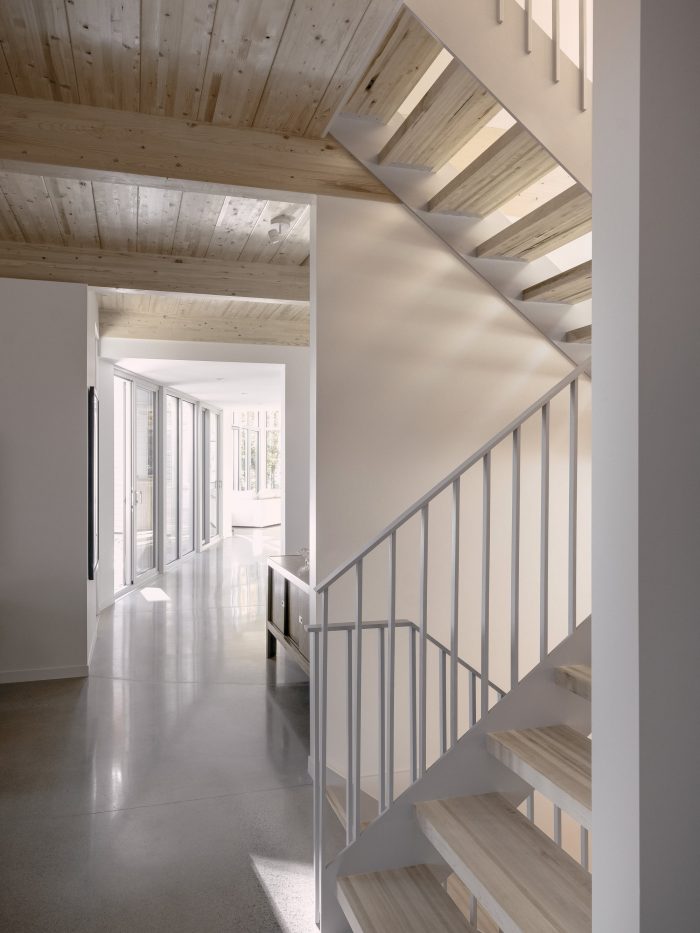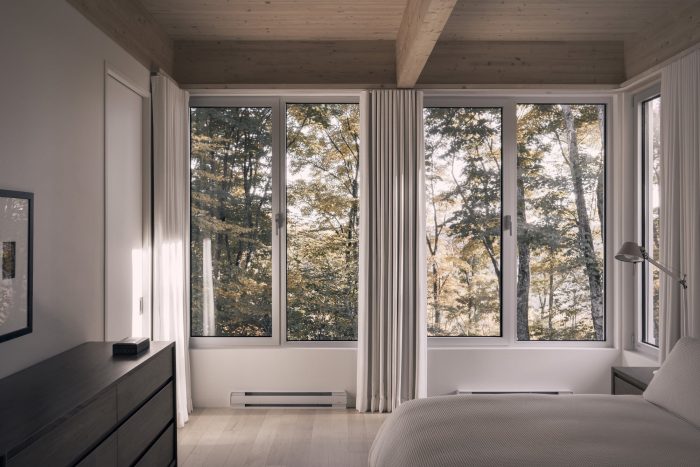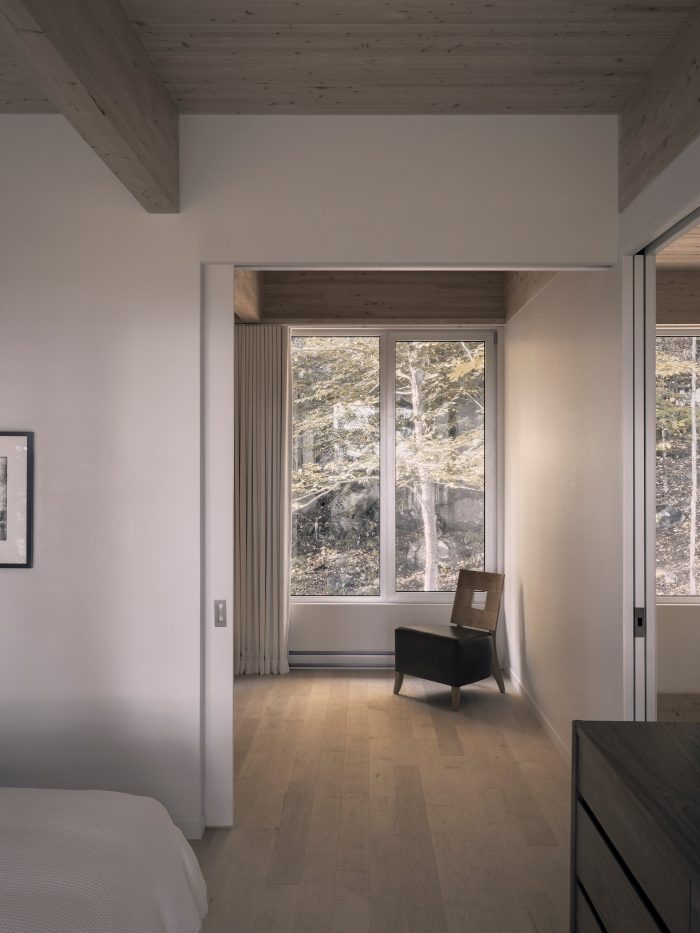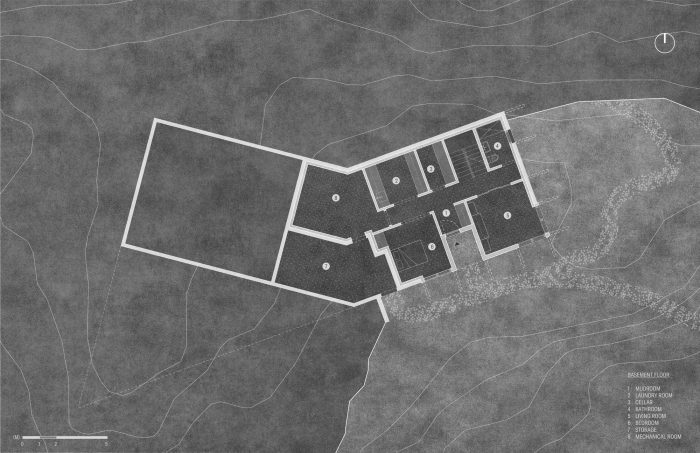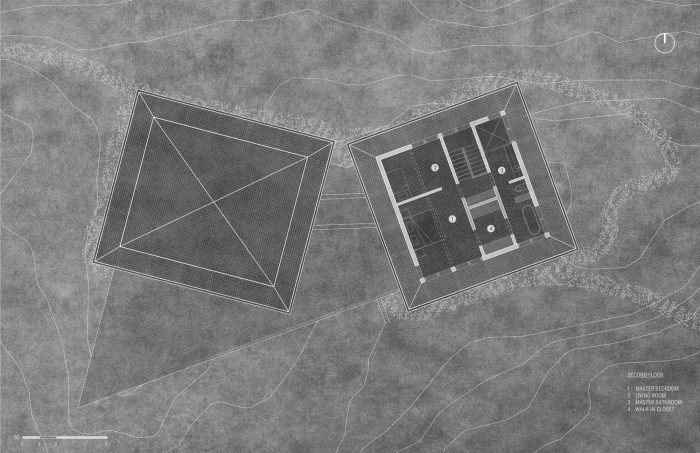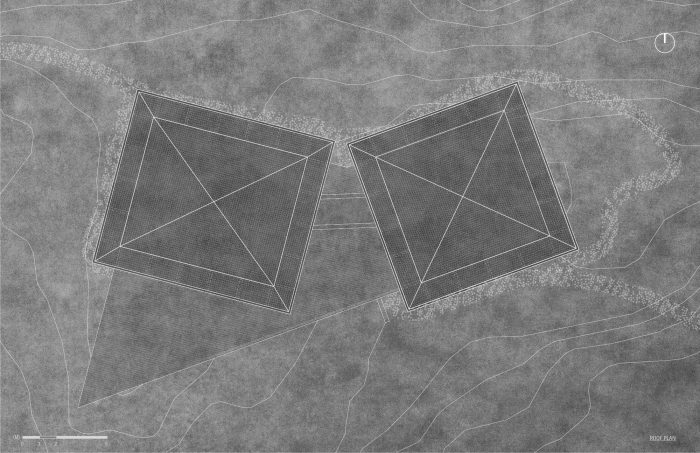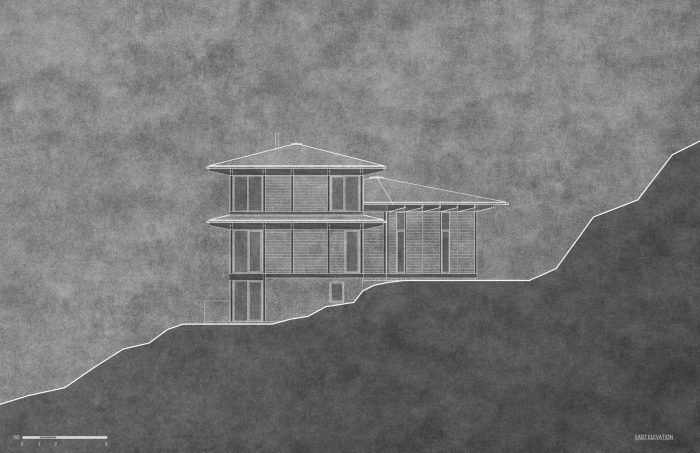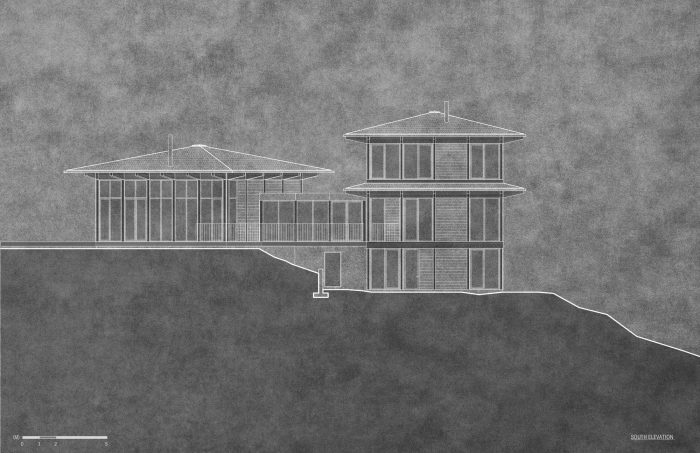在一个处于可建造性极限的自然环境中,罗洛为一个建筑项目提供了一种景观方法。该项目位于魁北克省的劳伦森地区,地处陡峭的斜坡上,其特点是大块的岩石突出,可以清楚地看到劳伦森地平线。在干预之前,业主在现场创造了各种分散和零碎的休闲区,由蜿蜒的徒步小径连接起来,沿着山地的陡峭悬崖绕行。由于这些初始场地使用的有机性和临时性,它们的特殊性为项目的开始提供了依据。
In a natural setting at the limits of constructability, Rolo offers a landscape approach to an architectural project. Located in the Laurentian region of Quebec, and situated on a steep slope, the property is characterized by large, rocky outcrops and offers clear views of the Laurentian horizon. Before the intervention, the owners had created a variety of scattered and fragmented amenity areas on site, linked together by winding hiking trails that skirt along the steep cliffs of the mountainous terrain. Due to the organic and temporary nature of these initial site uses, their specificity informed the beginning of the project.
因此,项目的概念前提被固定在业主多年来开发的这些临时占用的结构上。沿着他们已经占据的岩石高原的轮廓,住宅的位置是以一种战略方式组织的,以保持他们现有的一些 “生活方式”。建筑的开发不是为了支配周围的环境,也不是为了重新配置场地,而是为了观察景观并尊重其在干预之前的原始状态。
The conceptual premises of the project were therefore anchored to these temporary occupancy structures that the owners had developed over the years. Along the contours of a rocky plateau they already occupied, the location of the residence was organized in a strategic manner in order to maintain some of their existing “lifestyle”. Rather than dominating its surroundings, or reconfiguring its site, the architecture was developed to observe the landscape and respect its original state prior to the intervention.
![]()
为了保持高原的地形,项目空间按照现场可以看到的轴线被分成了两个体量。这种分割使得将项目分为两个体量成为可能:一个容纳日常功能,另一个容纳夜间功能。一个玻璃通道和开放的平台将两个体量连接起来,提供了一个令人惊叹的地平线的视野。
In order to maintain the topography of the plateau, the project spaces were divided into two volumes following axes that can be seen on the site. This fragmentation made it possible to divide the program into two volumes: one housing the daily functions, and the other the nightly functions. A glazed passageway and open terrace unite the two volumes, offering a breathtaking view of the horizon.
在其空间概念中,该项目倾向于垂直部署,作为一个分层的计划,遵循程序性的分割。
In its spatial conception, the project favors a vertical deployment as a layering of plans that follow the programmatic fragmentation.
![]()
通过这种策略,项目的占地面积得到了限制,并保留了场地的自然排水结构,至今几乎没有变化。使用胶合木材建造,该结构允许高天花板和开发 “内部景观”,其比例让人想起周围的树木。这成为脱胎换骨的室内反复出现的主题和诱惑,为周围的景观留下了足够的空间。支撑柱的节奏以垂直的海湾向地平线打开,并将外部全景分割成小型的 “精选画”。巨大的屋顶悬垂在整个展馆的外围,在冬天驱赶雪,在夏天驱赶阳光。
With this strategy, the footprint of the project was restricted and preserved the site’s natural drainage structure, which is almost unchanged today. Built using glue-laminated timber, the structure allows for high ceilings and develops ‘’interior landscapes’’ whose proportions recall those of the surrounding trees. This becomes the recurring theme and allure of the stripped-down interior, leaving plenty of room for the surrounding landscape. The rhythm of the supporting columns opens towards the horizon in vertical bays and breaks up the exterior panorama into small “selected paintings”. The large roof overhangs the entire outer perimeter of the pavilions, repelling snow during winter and the sun during summer.
结构布局简单而明显;表达了干预措施的轻盈和短暂的质量,与岩石山坡的更永久的方面形成对比。
The structural layout is simple and apparent; expressing the lightness and ephemeral quality of the intervention, in contrast with the more permanent aspect of the rocky hillside.
该项目的垂直度是战略性的–提供了一个敏感的反应,以保持场地和居民之间的微妙的拨款的愿望。该项目保留了山峰景观,与蒙特利尔郊区的森林砍伐和自然系统的破坏,以及该地区不断蔓延的发展形成鲜明对比。
The verticality of the project is strategic – offering a sensitive response to the desire to preserve a delicate appropriation between the site and its inhabitants. The project preserves a mountain peak landscape, in stark contrast to the plague of deforestation and destruction of natural systems, and the incessant sprawl of development in this area, on the outskirts of Montreal.
Architects: Alain Carle Architecte
Area : 327 m²
Year : 2021
Photographs :Félix Michaud
Manufacturers : Fabelta
Lead Architect : Alain Carle
Main Contractor : Dominic Toutant
Project Manager : Isaniel Lévesque
Glulam Structure : Art Massif
Cabinet Maker : Xavier Collection
City : Morin-Heights
Country : Canada

